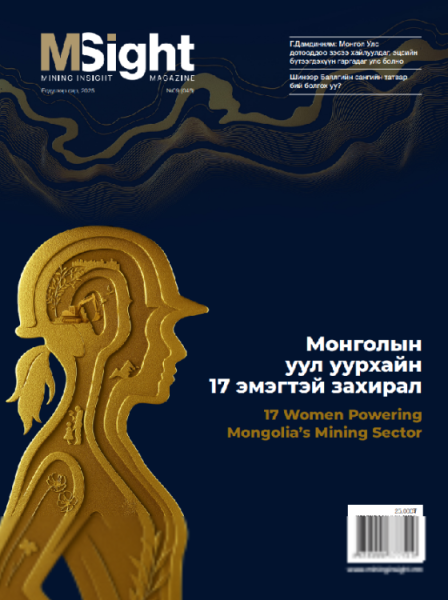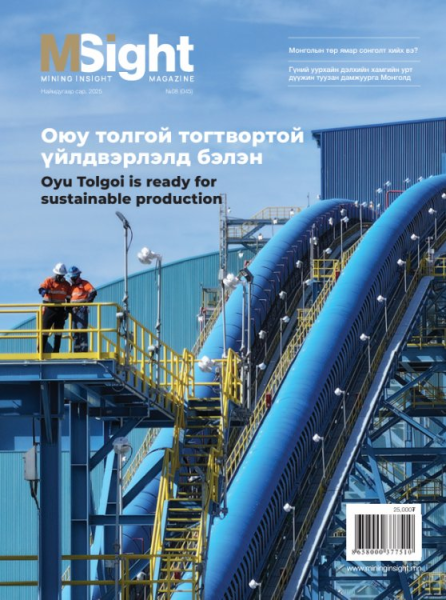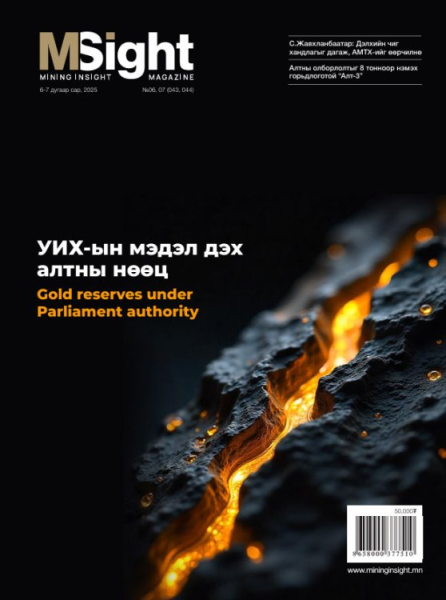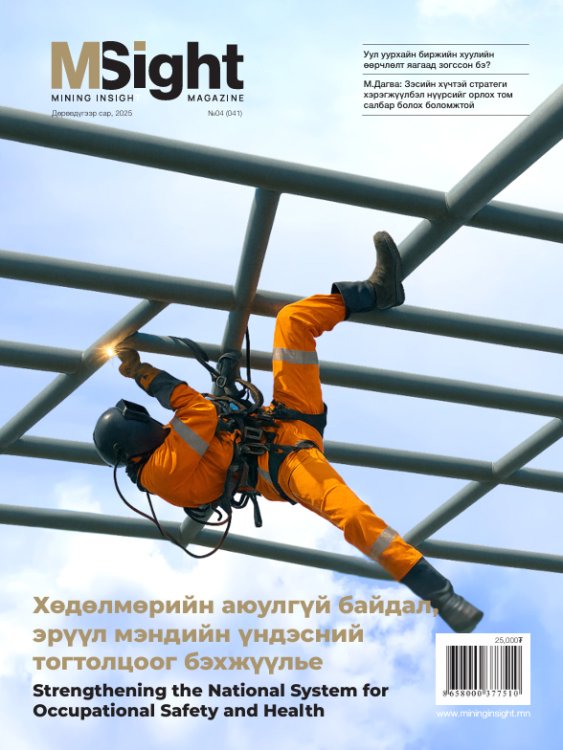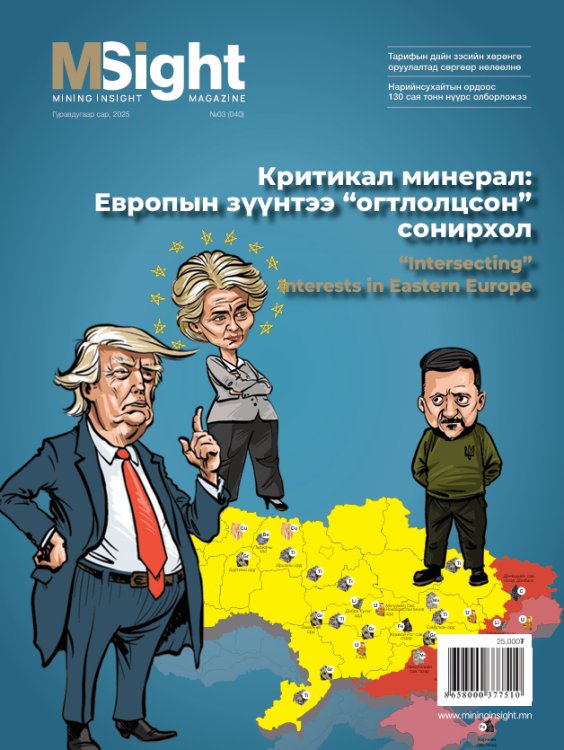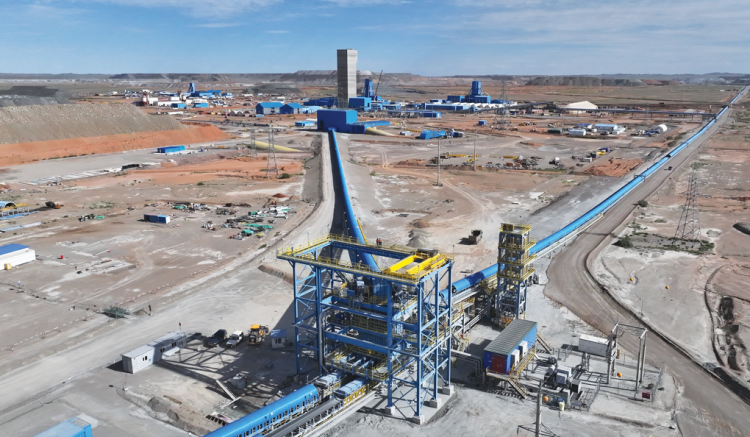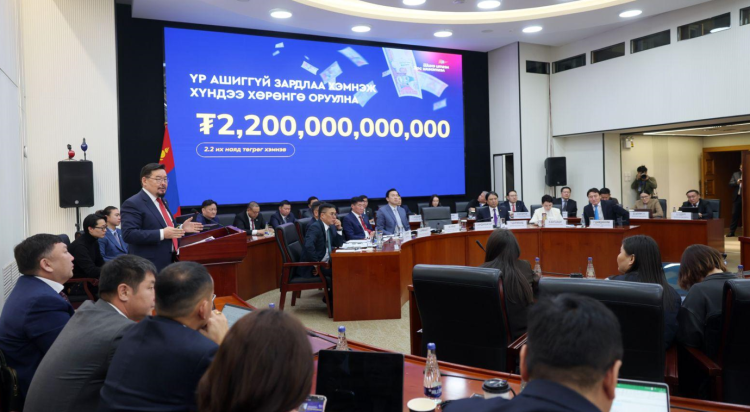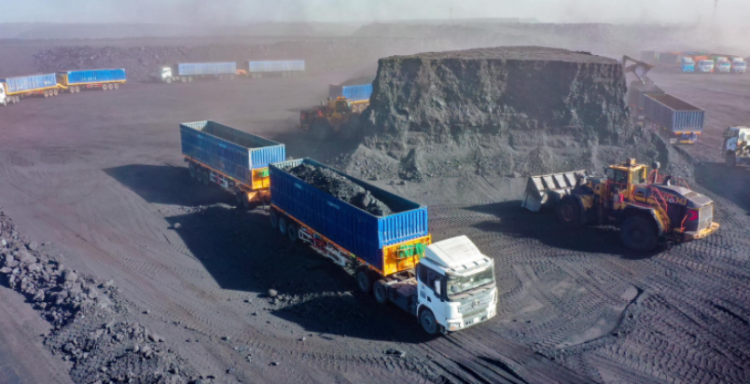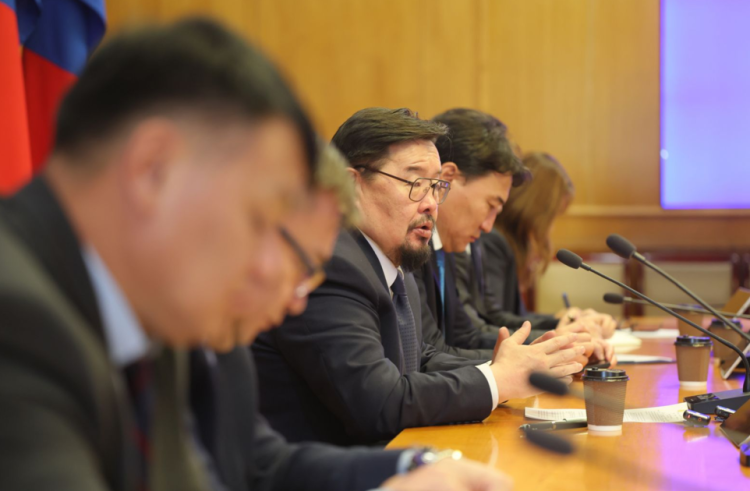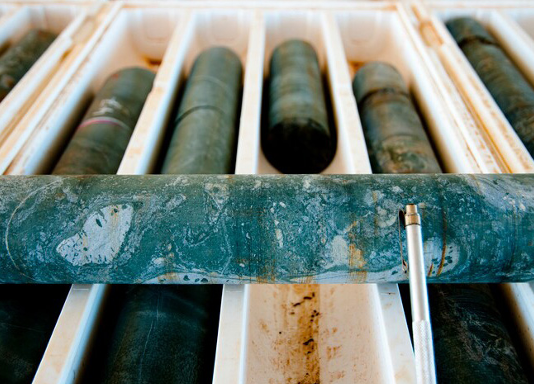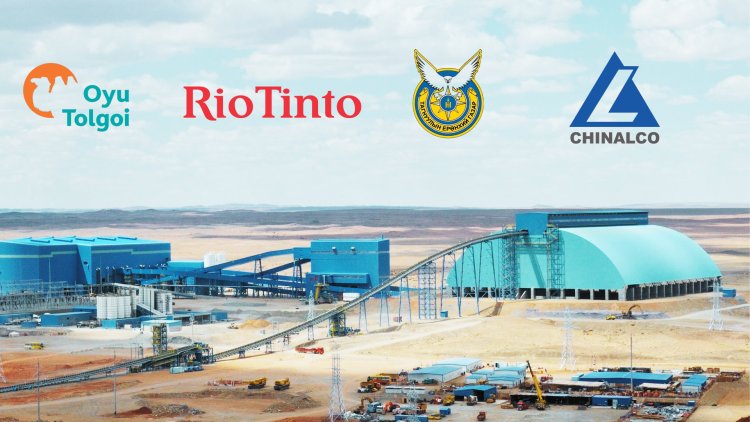
When comparing the ongoing events in the Mongolian mining sector with global developments that are shaking the mineral resources industry, it appears that strategic and important policies are being strongly implemented. Ukraine is a country rich in mineral resources, particularly critical minerals, which have abundant unused reserves. While the UkraineRussia war has been explained from multiple angles, including political, economic, and geopolitical perspectives, it has not been directly associated with the mining sector. However, following President Donald Trump’s statements about requiring the use of Ukraine’s critical minerals by the US in exchange for aid, many Western analysts have provided various interpretations. After Trump’s remarks, European Commission President Ursula von der Leyen met with Ukraine’s president and confirmed continued support for Ukraine. The intersection of interests between the US, the European Union, and Ukraine, particularly in the area of critical mineral reserves, is a growing concern. Interestingly, in 2021, the European Union had agreed to cooperate with Ukraine on the exploration and development of critical minerals, signing contracts in this regard. However, a significant portion of Ukraine’s mineral rich regions is now under Russian control. As global attention has already shifted towards addressing climate change and energy transitions, the value of the minerals essential for these transitions continues to rise. Consequently, global economic powers are focusing on securing strategic mineral resources, production, and supply chains, investing billions of dollars to safeguard national interests and support their domestic companies.
 As for Mongolia, it remains unclear what policy it is following regarding critical minerals and whether these are considered strategically important. However, the government seems to be implementing a “strategic importance policy” by attempting to acquire stakes in several strategically important deposits, aiming to increase the number of such deposits from 16 to 60 and acquire shares in them. Over the past 20 years, the government has shown interest in owning stakes in a few major coal mines, which seems to reflect its strategic policy. Beyond this, there has been little progress in opening new reserves or attracting new investments and partners for the exploration and development of other critical minerals. The Mongolian geological and exploration sector recently held its annual convention, highlighting the thoughts and results of geologists’ work. “Mining Insight” has featured these updates in this edition. At this moment, rather than the war in Ukraine, the “Trade War” appears to be posing a more significant risk of economic crisis, as seen in the market fluctuations during the first week of April. Not only is there a tariff dispute between the US and China, but also the broader global tariff conflicts, including those initiated by the European Union, may have unpredictable consequences for the mineral and mining sector. The impact of a potential global tariff conflict, with some countries imposing tariffs of up to 84%, could result in price fluctuations for certain minerals, with companies like BHP Billiton, Rio Tinto, and Glencore remaining relatively stable due to their diversified operations. The CEOs of these companies have indicated that they are not overly concerned about the tariff dispute, given their global operations and independence from a single country or product.
As for Mongolia, it remains unclear what policy it is following regarding critical minerals and whether these are considered strategically important. However, the government seems to be implementing a “strategic importance policy” by attempting to acquire stakes in several strategically important deposits, aiming to increase the number of such deposits from 16 to 60 and acquire shares in them. Over the past 20 years, the government has shown interest in owning stakes in a few major coal mines, which seems to reflect its strategic policy. Beyond this, there has been little progress in opening new reserves or attracting new investments and partners for the exploration and development of other critical minerals. The Mongolian geological and exploration sector recently held its annual convention, highlighting the thoughts and results of geologists’ work. “Mining Insight” has featured these updates in this edition. At this moment, rather than the war in Ukraine, the “Trade War” appears to be posing a more significant risk of economic crisis, as seen in the market fluctuations during the first week of April. Not only is there a tariff dispute between the US and China, but also the broader global tariff conflicts, including those initiated by the European Union, may have unpredictable consequences for the mineral and mining sector. The impact of a potential global tariff conflict, with some countries imposing tariffs of up to 84%, could result in price fluctuations for certain minerals, with companies like BHP Billiton, Rio Tinto, and Glencore remaining relatively stable due to their diversified operations. The CEOs of these companies have indicated that they are not overly concerned about the tariff dispute, given their global operations and independence from a single country or product.
In fact, the tariff conflict might even expedite certain projects, leading to price increases for key minerals in the future. In response to these developments, the executives have emphasized their strategies to focus on projects in North and South America, intending to increase their investments regardless of the changes in the global situation.




